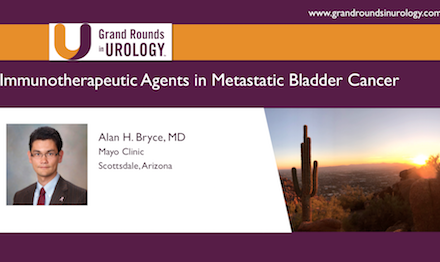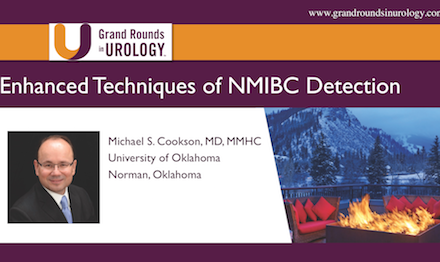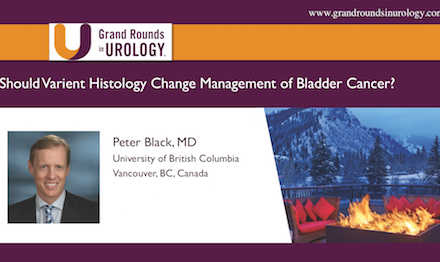Seth P. Lerner, MD, presented “Prioritizing the Optimal Therapy for T1 Bladder Cancer: Using the Old and the New to Determine What to Do” at the 6th International Bladder Cancer Update on November 18, 2022, in Scottsdale, Arizona.
How to cite: Lerner, Seth P. “Prioritizing the Optimal Therapy for T1 Bladder Cancer: Using the Old and the New to Determine What to Do” November 2022. Accessed Apr 2024. https://grandroundsinurology.com/prioritizing-the-optimal-therapy-for-t1-bladder-cancer-using-the-old-and-the-new-to-determine-what-to-do/
Prioritizing the Optimal Therapy for T1 Bladder Cancer: Using the Old and the New to Determine What to Do – Summary
Seth P. Lerner, MD, Professor of Urology and Vice-chair for Faculty Affairs in the Scott Department of Urology, and Director of Urologic Oncology and the Multidisciplinary Bladder Cancer Program at Baylor University, discusses the optimal therapy for T1 high-grade (T1HG) bladder cancer and considers the future of treatment. Dr. Lerner details the importance of muscle in the specimen when staging the depth of invasion. He describes when a tumor should be classified as high-grade, and thus high-risk. T1 sub-staging reflects the depth of invasion, which has implications for risk, and therefore treatment. In almost all cases, re-resection is required. Enhanced cystoscopy, in combination with site-directed biopsies, helps detect carcinoma in situ (CIS). Dr. Lerner considers a case in which intravesical Bacillus Calmette-Guerin (BCG) weekly for 6 weeks is recommended. Dr. Lerner then reviews a second case in which a cystectomy is the best option for a large-volume multifocal T1HG plus unresectable TaHG tumor in the diverticulum. Dr. Lerner introduces a T1HG meta-analysis which associated factors such as lymphovascular invasion (LVI) and non-use of BCG with risk of recurrence. Dr. Lerner considers when initial radical cystectomy is appropriate. He discusses the applicability of up-front cystectomy in certain cases, such as patients with primary T1HG with large-volume or multifocal disease, or in cases of LVI. He continues by considering the variant histology that indicates cystectomy, such as micropapillary. He addresses a study that shows similar outcomes despite the immediacy of cystectomy in cases of HGT1 disease. Dr. Lerner describes the current review of BCG unresponsive high-risk non-muscle-invasive bladder cancer (NMIBC). He highlights the potential for combination therapy in high-risk patient populations. Dr. Lerner introduces T1HG subtypes, and how differing molecularly may have clinical implications.
About the 6th International Bladder Cancer Update:
The International Bladder Cancer Update (IBCU) is a CME conference focused on the diagnosis and treatment of bladder cancer. The conference offers medical professionals an opportunity to listen to updates from, and interact with, expert international faculty to improve knowledge and determine best treatment practices to improve patient outcomes. IBCU encompasses expert lectures, interactive discussions, a panel roundtable, debates, and case presentations. It is physician-led, multi-supported, and designed for urologists, urologic oncologists, and other healthcare professionals involved in the treatment of bladder cancer.
For further educational activities from this conference, visit our collection page.




